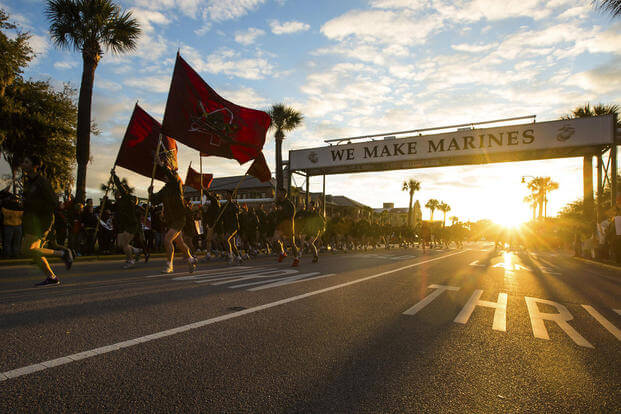The Marine Corps will get funding for 3,000 additional troops in the fiscal 2017 defense budget, according to a compromise version of the bill released this week.
The fiscal 2017 National Defense Authorization Act would allow the service to grow from 182,000 to 185,000, even as it reorganizes the top leadership structure. The 3,000 additional troops would represent the first plus-up in years for the Marine Corps, which has been tasked with drawing down from a wartime high of 202,000 since 2011, and would return the service to a pre-war end strength.
The additional troops, if the bill is approved by the president and funded by an appropriations measure, likely would be used to bulk up the Corps' cyber, information warfare and electronic warfare communities -- a key growth area that senior service leaders have repeatedly emphasized over the past year.
In March, Lt. Gen. Robert Walsh, commanding general of Marine Corps Combat Development Command, told an audience in Washington, D.C., that he wanted to grow those fields by 1,000 to 3,000 troops as the service braced for a future fight, potentially against a sophisticated near-peer competitor. At the time, he suggested the service would tighten other areas to find the needed growth.
"We're going to have to trade capabilities within the [Marine air-ground task force] to be able to grow those capabilities," he said. "We're going to grow in that area of Marines; that is going to have to come from within the force to be able to make this a more capable 21st century force."
In a later interview, Walsh told Military.com that internal analysis had revealed an ideal force size of 190,000, which he said would allow troops to spend more time at home between deployments, shore up the service's intelligence community, and rebuild Marine Expeditionary Force headquarters.
As the service grows, the leadership structure may also get a minor shake-up.
The NDAA authorizes a 25 percent cut to the number of general and flag officers on active duty in all services by the end of 2022, a measure designed to eliminate the trend of "bloated headquarters and staffs" while keeping enough positions for generals and admirals to safely lead and oversee rank-and-file troops.
The Marine Corps, however, is authorized to remain at roughly its current level of general officers, with some mandatory reorganization. As of February, the service had 83 general officers on active duty in all assignments, according to a Marine Corps Concepts and Programs document. The NDAA would allow the Marine Corps to keep 62 generals in positions within the service, and another 21 in the joint pool, which covers positions on the joint staff, combatant commands and other joint posts.
A special provision in the bill requires the Corps to increase the number of generals in the two ranks above major general from 15 to 17, to decrease the number of major generals by one from 23 to 22, and to increase the number of deputy commandant positions within the Marine Corps from six to seven, possibly to create a position for the new higher-ranking general.
Currently, the three-star deputy commandants, who answer to the assistant commandant of the Marine Corps, oversee Manpower and Reserve Affairs; Plans, Policies and Operations; Aviation; Programs and Resources; Installations and Logistics; and Combat Development and Integration. It's not yet clear what the seventh deputy commandant would be tasked to oversee.
-- Hope Hodge Seck can be reached at hope.seck@military.com. Follow her on Twitter at@HopeSeck.





























